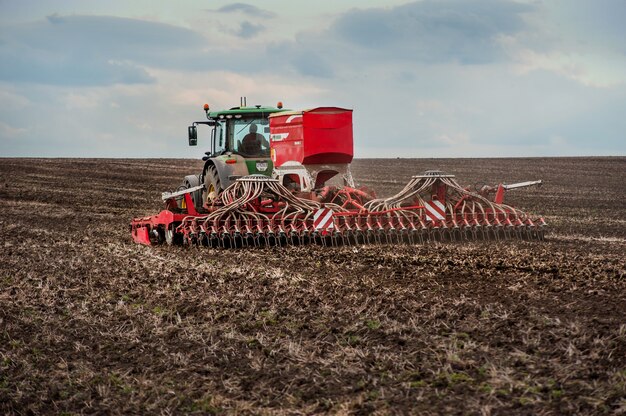Choosing the right field cultivator is essential for effective soil preparation, weed control, and maximizing crop yields. Different crop types require specific soil conditions, and the right cultivator ensures optimal seedbed preparation while preserving soil health. Here’s how to select the best field cultivator for your needs.
1. Understand Your Soil Type
Soil texture and structure play a crucial role in determining the type of cultivator you need. Sandy soils require lighter cultivators to prevent excessive disturbance, while heavy clay soils benefit from robust, deep-tillage equipment that can break up compacted layers. If your soil is prone to erosion, a cultivator with minimal soil disturbance is ideal.
2. Consider Your Crop Type
Different crops have unique soil preparation needs:
- Row Crops (corn, soybeans, cotton): Require a cultivator that can create uniform seedbeds and effectively manage weeds without excessive soil compaction.
- Vegetables (carrots, lettuce, tomatoes): Benefit from precision cultivators with adjustable tines that ensure shallow tillage and weed removal without damaging roots.
- Cereal Grains (wheat, barley, oats): Require a cultivator that evenly loosens the soil to promote good seed-to-soil contact.
3. Evaluate Cultivator Types
There are several types of field cultivators, each designed for specific functions:
- Spring-Tine Cultivators: Ideal for lighter soils and shallow tillage, helping to aerate the soil without excessive disruption.
- Chisel Plows: Best for breaking up hardpan layers in compacted soils while retaining crop residue for erosion control.
- S-Tine Cultivators: Work well in medium-textured soils and are excellent for weed control and seedbed preparation.
- Disk Cultivators: Suitable for heavy soils, as they chop crop residue and mix it into the soil to improve organic matter.
4. Consider Field Conditions and Size
The size and condition of your field determine the efficiency of a cultivator. For small farms, a compact or tractor-mounted cultivator is sufficient. Larger fields require wide, heavy-duty cultivators that reduce the number of passes needed, saving time and fuel. If dealing with rocky terrain, choose a cultivator with adjustable depth control to prevent damage.
5. Assess Depth and Spacing Adjustments
A good cultivator should allow for depth and spacing adjustments to accommodate different crop types and growth stages. Deep tillage is necessary for breaking compacted soil layers, while shallow tillage is preferred for weed control without disturbing crop roots.
6. Ensure Compatibility with Your Equipment
Check whether the cultivator matches your tractor’s horsepower and hydraulic capacity. An underpowered tractor will struggle to pull a heavy cultivator, while an overpowered one may cause unnecessary fuel consumption.
7. Look for Durability and Maintenance Needs
Opt for cultivators made from high-quality materials that resist wear and tear. Easy-to-replace parts, greaseable bearings, and adjustable shanks help reduce downtime and maintenance costs.
8. Factor in Cost and ROI
Consider the initial cost, fuel efficiency, and long-term benefits. Investing in a high-quality cultivator that suits your crop types can improve yields and lower operational costs over time.
Selecting the right field cultivator depends on your soil type, crop needs, field conditions, and available equipment. By choosing the appropriate model, you can enhance soil preparation, improve crop performance, and maximize farm efficiency.
Join 'Farmers Mag' WhatsApp Channel
Get the latest Farming news and tips delivered straight to your WhatsApp
CLICK HERE TO JOIN






